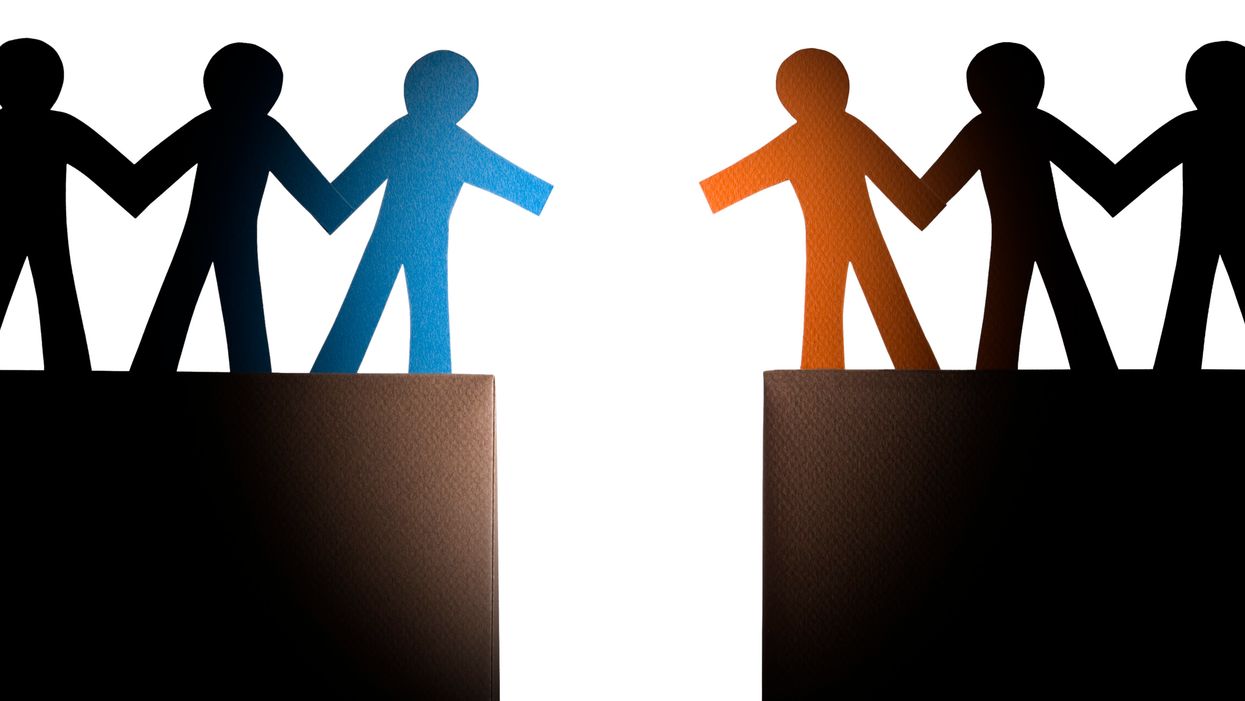Gates and Gerzon are co-directors of Philanthropy Bridging Divides, a transpartisan conversation among America's philanthropic leaders.
After examining “ anti-bridgers ” and “ faux bridging ” in our previous two columns, it is clear that genuinely "bridging divides" is challenging, rare and difficult. It is hard work, requires skillful facilitation, an open mind and ongoing care. It means that one has to be open to listening to other perspectives and learning from those with other points of view. It means making oneself vulnerable, recognizing that even our strongest-held beliefs might need to be reexamined.
Earlier in our careers we were both warriors, sure of our points of view and eager to beat down the other side. But it has become clear to both of us that the victories earned via battle are truly pyrrhic. Little or no real progress endures. Our side wins today; their side wins tomorrow; and the country careens from left to right, slowly but surely losing its way.
In some ways, our current politics seem to epitomize that approach. Our parties take turns rallying their troops and vilifying the other side as voters consistently flip power from one side to the other in an effort to find some semblance of balance. But evidently that’s not working. (Two-thirds of Americans think the country is on the “wrong track” and only 20 percent think it’s going in the “right direction.”)
Democracy reform has fallen victim to this phenomena as much as any other issue. Each party proposes “reforms” that are basically designed to promote their cause and favor their side. The reform community, while sometimes mouthing the word “transpartisan,” is primarily led by those on the center-left, which means that those on the center-right often completely avoid the conversation about the state of democratic practice. And yet, as John Gardner, the founder of Common Cause and a mentor to Chris, famously said, “Someone needs to worry about what’s best for democracy no matter who is in charge.”
If we have any realistic hope of making our democracy more fair, more open, more inclusive and more relevant, we will need to find a way to build a bridge that can connect the two warring armies. We are not naive about how difficult it might be to do this, but we think it is imperative.
We believe there are three key actions that need to be taken to authentically move this work forward.
- To truly bridge ideological divides, the reform community needs to become more diverse in every way. Organizations need to ideologically diversify their senior staff and boards. It isn’t enough to announce: “We have a Republican on our board!” That person will invariably be, and be viewed as, a token. Democracy advocates must also find a way to become more racially and ethnically diverse. In addition to being a largely center-left movement, it is also largely a very white movement in a country that is becoming more diverse by the day. The field must find a way to look more like America in 2022, which is a diverse nation with a relatively evenly divided electorate.
- This work will require multiple platforms that are truly and authentically safe, civic spaces, places and settings where diverse perspectives can be safely shared, without fear of attack or contempt. Again, this is easier said than done, and will require mediation and facilitation of the highest degree. Stephen Heinz, president of the Rockefeller Brothers Fund, often reminds us that cross-partisan bridging can only happen “at the speed of trust.” If we don’t know our counterpart on the other side, we can never build the bonds of trust that will allow us to find common ground.
- Finally, those who engage in this work need to recognize that “bridging divides” doesn’t always translate into finding common ground, or even agreeing. Sometimes it is enough to better understand a perspective that is different from your own, even if both sides hold their positions. What is likely to happen in these instances is that the “disagreement” remains just that. Two sides or two people who understand why the other holds the position they hold. In these instances there is less anger, less name calling and fewer misunderstandings. Sen. Bob Dole, who passed away earlier this month, was known as a tough warrior and a defender of his position, but he was also kind, human and funny. He could disagree with you and you could disagree with him but it never got angry and it never got personal. We could use a dose of that in our country today.
We have concluded that bridge-building is the way forward, not just because it is “civil” or “respectful,” but because it is practical. The real change-makers during the past century — Gandhi, Mandela, King — always incorporated dialogue into their strategies for change. Even from the Birmingham jail, Martin Luther King Jr. said the goal of the movement was “not victory, but reconciliation.”
So as we head into another election year, let us keep his wise counsel in mind. For those who are in the partisan game, whichever side you are on — red, blue or independent — you will no doubt want your candidate and your party to win. But at the same time you can work to better understand other perspectives and why someone might have a different point of view.
For those who have stepped out of the partisan arena, the coming year will be a critical time for building bridging infrastructure and transpartisan relationships. It will also be an important time for reminding citizens and voters alike that partisan, zero-sum politics is just one of our tools for solving problems and moving our nation forward.
For all of us who care about the health of our democracy, these can sometimes feel like perilous times. But if history is our guide, we will find a way forward that is more civil, less angry and more inclusive.


















